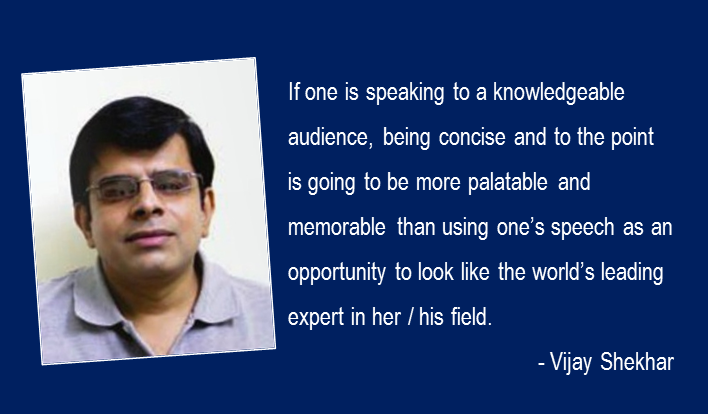“Instruments that record, analyse, summarise, organise, debate and explain information which are illustrative, non-illustrative, hardbound, paperback, jacketed, non-jacketed with foreword, introduction, table of contents, index that are indented for the enlightenment, understanding, enrichment, enhancement, and education of the human brain through sensory root of vision…sometimes touch.”
The above definition of BOOKS by Rancho (Aamir Khan) in ‘3 Idiots’ may have irritated his on-screen Professor, but fact remains that our entire education system prefers long memorised answers, and not short easy-to-understand ones.
This culture has inevitably percolated into the Corporate world too, where it has become stylish to ‘complicate’ than to ‘simplify’. Generally a communicator whom no one can understand is considered to be a level above (one who knows more than the rest); and the one who can uncomplicatedly get his message across the audiences an equal.
In today’s Corporate set-up, whenever someone is pitching for something (could be business, contract, order…anything), the general belief is that ‘bigger the PowerPoint presentation, bigger the prospects of conversion’. This has been the scenario ever since PowerPoints dominated the scene. Fact of the matter remains (and anyone would agree) that more than half of the slides that are made and / or presented are of no present or future consequence. Yet executives make them…because they want to impress their bosses with their knowledge and thought process; the bosses in turn want to impress their bosses; and the big boss or team leader wants to impress that third party who would give them that big order or business.
The PR business is no different. Whenever an consultancy pitches to a new prospect, a PowerPoint sets the tone for the conversation. The presentations have everything…both relevant and irrelevant.
They have slides on the prospect and the business the prospect operates in. Am sure every prospect representative being presented to would already know what her / his company does and the sector they operate in. And these inputs are generally pure copy paste…taken off the shelves, from the prospect’s official website and some business reports and media articles, which are available in abundance. And on most of the occasions, the prospect requests the presenting firm to skip these slides and go straight to the strategy part. This shows that the consultancy personnel haven’t really come out of the ‘school / college exam’ mode, where one necessarily needs to write from what one has studied. This segment of the presentation makes for good verbal conversation and debate…but doesn’t need to be presented.
Also anyone would agree that once the contract is signed, less than 50 percent of what is proposed in the PowerPoint is actually implemented and gets delivered. This again happens because a lot is promised. During the presentation sessions, agencies tend to make every prospect (however big or small or even in very nascent stages) believe that they (the prospect) are the Amitabh Bachchan of their business. They go overboard with deliverables and spend a lot of slides in telling the prospect the innumerable possibilities which practically don’t exist. The prospects too get carried away with expectations, and sign on the dotted line. And then starts the firm’s struggles and excuses as to why something that was supposed to happen did not happen. This is followed by bad meetings, consultancy fee being delayed / stopped, and finally calling it quits.
It’s also important to understand here that attention levels tend to wane after 15 – 20 minutes. So it’s imperative for any presentation to have the most important aspects covered within these 15 – 20 minutes. Preferably, this is how long a PowerPoint should be. The remaining slides may be done away with…if unavoidable, these may be for the prospects’ later reading if at all they feel the need.
We often confuse communicating what we know with showing off to an audience. Even if one is speaking to a knowledgeable audience, being concise and to the point is going to be more palatable and memorable than using one’s speech as an opportunity to look like the world’s leading expert in her / his field. The first objective should not be to drill one’s expertise, but to create a link with the audience…and present a simplified vision that is the key to understanding the core message(s). And the best way to do that is to give the audiences a KISS…in other words, ‘Keep It Short & Simple’. And it’s not about playing down what one has to say…it’s about expressing an idea or thought that may be complex, using clear and simple language, and avoiding any kind of jargon.



Be the first to comment on "Let’s Uncomplicate and KISS"